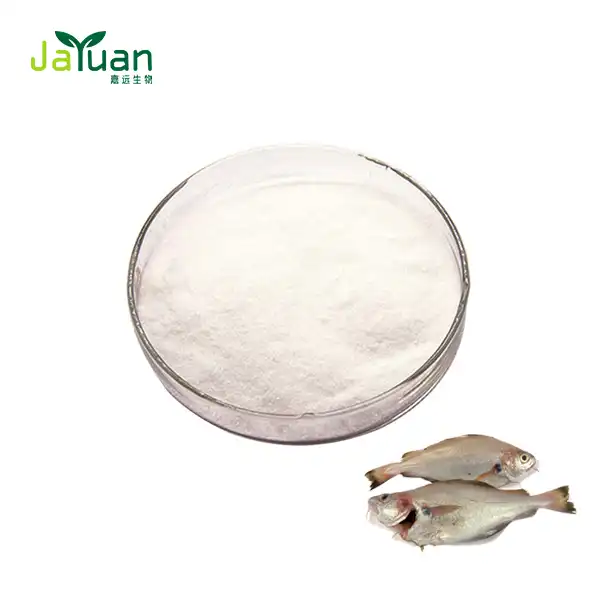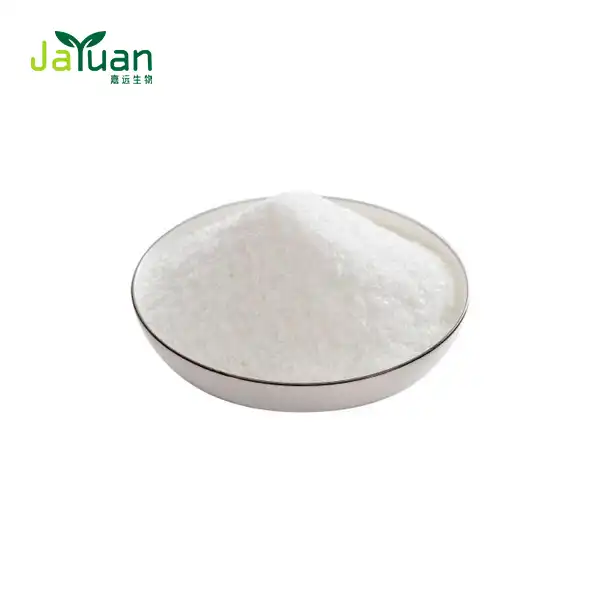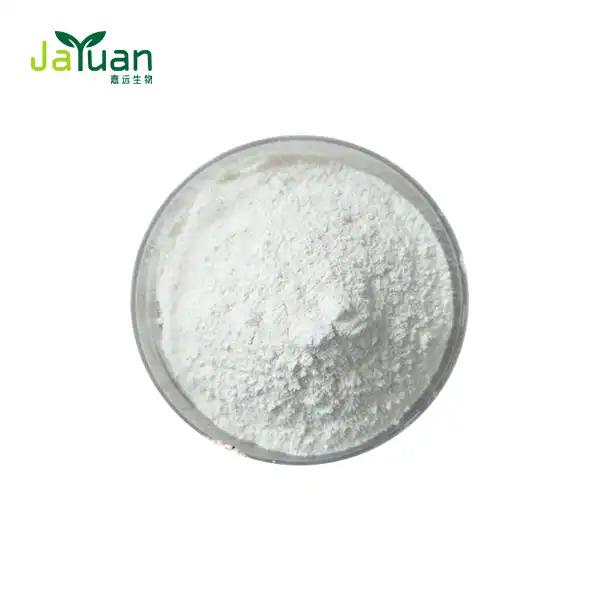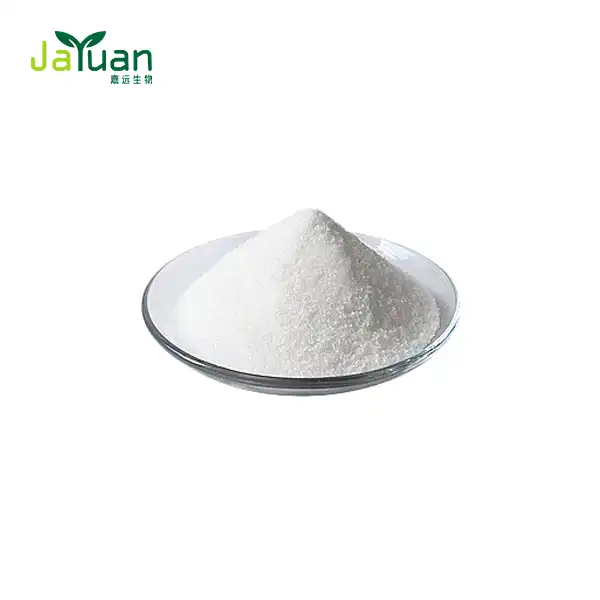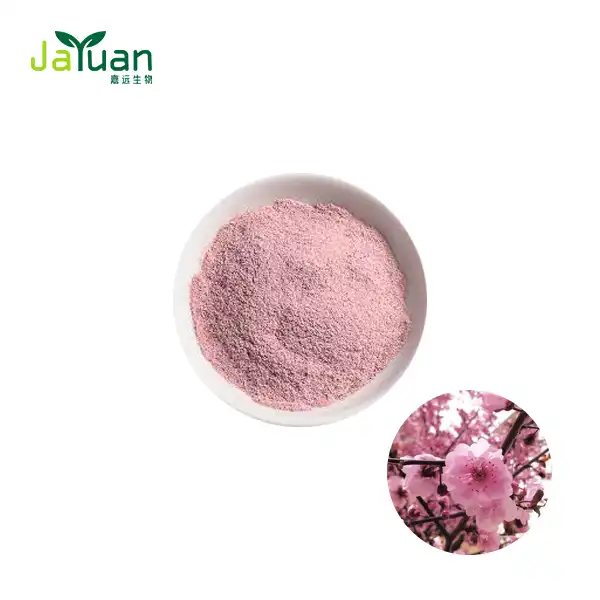A Comprehensive Guide to Cytisine for Health Professionals
Cytisine, a plant-based alkaloid, has garnered significant attention in recent years as a potential aid for smoking cessation. This comprehensive guide aims to provide health professionals with essential information about it, its applications, and best practices for its use. As we delve into the intricacies of this compound, we'll explore dosage guidelines, side effect management, and integration strategies for smoking cessation programs.

Product Name: Cytisine
CAS NO.: 485-35-8
Molecular formula: C11H14N20
Molecular weight: 190.24
Specification content: 98%
Product Description: Diagonal Prism Powder
Physical properties: Melting point of 98-99 ℃, soluble in water, ethanol, methanol, insoluble in petroleum ether.
Detection method: HPLC
MOQ: 500g-1KG Free
Customized service: Support adjusting purity (95% -99%) according to customer needs
Payment: 100% TT in advance
Certificaions: FSSC2000/ISO2000/HALAL/KOSHER/HACCP
Delivery terms: FedEx, DHL, EMS, UPS, TNT, all kinds of the airline, international shipping companies.
Free sample is available.
We do not sell retail quantities to individuals.
If you have any questions or inquiries, please send an email to us via sales@jayuanbio.com and sales1@jayuanbio.com for more details! We’ll try our best to give you a better service.
Looking forward to your feedback!
Your prompt reply would be greatly appreciated!
Dosage Guidelines: Optimizing Treatment
Determining the appropriate dosage of the product is crucial for maximizing its effectiveness while minimizing potential side effects. Health professionals should be well-versed in the recommended dosing regimens to ensure optimal outcomes for their patients.
Standard Dosing Protocol
The typical dosing schedule spans 25 days and involves a gradual reduction in dosage:
- Days 1-3: 1 tablet (1.5 mg) every 2 hours (6 tablets daily)
- Days 4-12: 1 tablet every 2.5 hours (5 tablets daily)
- Days 13-16: 1 tablet every 3 hours (4 tablets daily)
- Days 17-20: 1 tablet every 5 hours (3 tablets daily)
- Days 21-25: 1-2 tablets daily
This tapering approach allows for a gradual reduction in its intake, particularly in formulations such as cytisine 98%, while helping to manage withdrawal symptoms effectively.
Individualized Dosing Considerations
While the standard protocol serves as a general guideline, health professionals should consider individualizing the dosage based on factors such as:
- Patient's smoking history and nicotine dependence level
- Presence of comorbidities
- Potential drug interactions
- Patient's response to treatment
Adjusting the dosage to suit individual needs may enhance treatment adherence and overall success rates.
Managing Side Effects in Therapy
As with any therapeutic intervention, the product may cause side effects in some individuals. Health professionals should be prepared to recognize and manage these effects to ensure patient comfort and treatment adherence. When considering its manufacturer, you need to pay attention to production standards, quality assurance practices, and regulatory compliance.
Common Side Effects
The most frequently reported side effects of it include:
- Nausea
- Dry mouth
- Headache
- Mild gastrointestinal discomfort
- Sleep disturbances
These effects are generally mild and transient, often resolving without intervention as the body adjusts to the treatment.
Strategies for Side Effect Management
To help patients navigate potential side effects, health professionals can implement the following strategies:
- Encourage patients to take it with food to reduce gastrointestinal discomfort
- Recommend adequate hydration to alleviate dry mouth symptoms
- Suggest taking the medication earlier in the day to minimize sleep disturbances
- Consider temporary dosage adjustments if side effects persist or become bothersome
- Provide reassurance about the transient nature of most side effects
Monitoring and Follow-up
Regular follow-up appointments are essential to assess treatment progress and address any emerging concerns. Health professionals should:
- Schedule frequent check-ins during the initial treatment phase
- Encourage patients to maintain a symptom diary
- Perform periodic assessments of liver function, as it is primarily metabolized by the liver
- Be vigilant for signs of rare but serious adverse events
Integrating it into Smoking Cessation Programs
Incorporating cytisine into comprehensive smoking cessation programs can enhance overall success rates. Health professionals should consider various aspects of integration to optimize outcomes. When considering purchase it, you need to pay attention to quality standards, regulatory compliance, and consistency in product formulation.
Combination Therapies
While the product can be effective as a standalone treatment, combining it with other smoking cessation aids may yield synergistic benefits:
- Behavioral counseling: Provides crucial emotional support and coping strategies
- Nicotine replacement therapy (NRT): May be used in conjunction with it for severe nicotine dependence
- Mobile apps and digital tools: Offer additional support and tracking capabilities
Patient Education and Counseling
Ensuring patients are well-informed about it and its use is paramount for treatment success. Health professionals should:
- Provide clear instructions on the dosing schedule and administration
- Discuss potential side effects and management strategies
- Set realistic expectations regarding the cessation process
- Offer guidance on lifestyle modifications to support smoking cessation
Tailoring Treatment Plans
Customizing smoking cessation programs to individual patient needs can significantly improve outcomes. Consider:
- Patient preferences and previous cessation attempts
- Socioeconomic factors that may impact treatment adherence
- Cultural considerations that may influence smoking behaviors
- Presence of comorbid conditions that may affect treatment approach
Long-term Support and Relapse Prevention
Smoking cessation is often a long-term process that extends beyond the initial treatment period. Health professionals should:
- Develop strategies for ongoing support after the completion of its therapy
- Provide resources for relapse prevention and management
- Encourage participation in support groups or peer networks
- Consider extended or intermittent use of the product for individuals at high risk of relapse
Monitoring Treatment Efficacy
Assessing the effectiveness of cytisine-based smoking cessation programs is crucial for continuous improvement. Health professionals can:
- Implement standardized tools to measure abstinence rates
- Collect and analyze data on patient experiences and outcomes
- Conduct regular reviews of program efficacy and make necessary adjustments
- Stay informed about emerging research and best practices in use
By integrating these strategies, health professionals can optimize the use of it in smoking cessation programs, potentially improving quit rates and long-term abstinence among their patients.
Conclusion
In conclusion, cytisine represents a promising tool in the arsenal against tobacco addiction. By understanding its optimal dosing, managing potential side effects, and integrating it effectively into comprehensive smoking cessation programs, health professionals can harness the full potential of this plant-based compound to help individuals overcome their nicotine dependence.
For more information on it and its applications in smoking cessation, please don't hesitate to reach out to our team of experts. Contact us at sales@jayuanbio.com or sales1@jayuanbio.com to learn more about our high-quality products and how they can benefit your patients in their journey to a smoke-free life.
At Jayuan Bio, we pride ourselves on offering premium-quality product backed by rigorous quality control and extensive research. Our dedicated team is committed to providing you with the support and information you need to integrate it effectively into your smoking cessation programs. When considering purchase it, you need to pay attention to supplier credibility, product authenticity, and regulatory certifications. Discover the Jayuan Bio difference – where science meets nature for better health outcomes.
References
1. Walker, N., et al. (2014). Cytisine versus nicotine for smoking cessation. New England Journal of Medicine, 371(25), 2353-2362.
2. Hajek, P., et al. (2013). Efficacy of cytisine in helping smokers quit: systematic review and meta-analysis. Thorax, 68(11), 1037-1042.
3. Tutka, P., & Zatonski, W. (2006). Cytisine for the treatment of nicotine addiction: from a molecule to therapeutic efficacy. Pharmacological Reports, 58(6), 777-798.
4. Cahill, K., et al. (2016). Pharmacological interventions for smoking cessation: an overview and network meta-analysis. Cochrane Database of Systematic Reviews, (5).
5. Rigotti, N. A. (2012). Strategies to help a smoker who is struggling to quit. JAMA, 308(15), 1573-1580.
6. West, R., et al. (2011). Placebo-controlled trial of cytisine for smoking cessation. New England Journal of Medicine, 365(13), 1193-1200.


